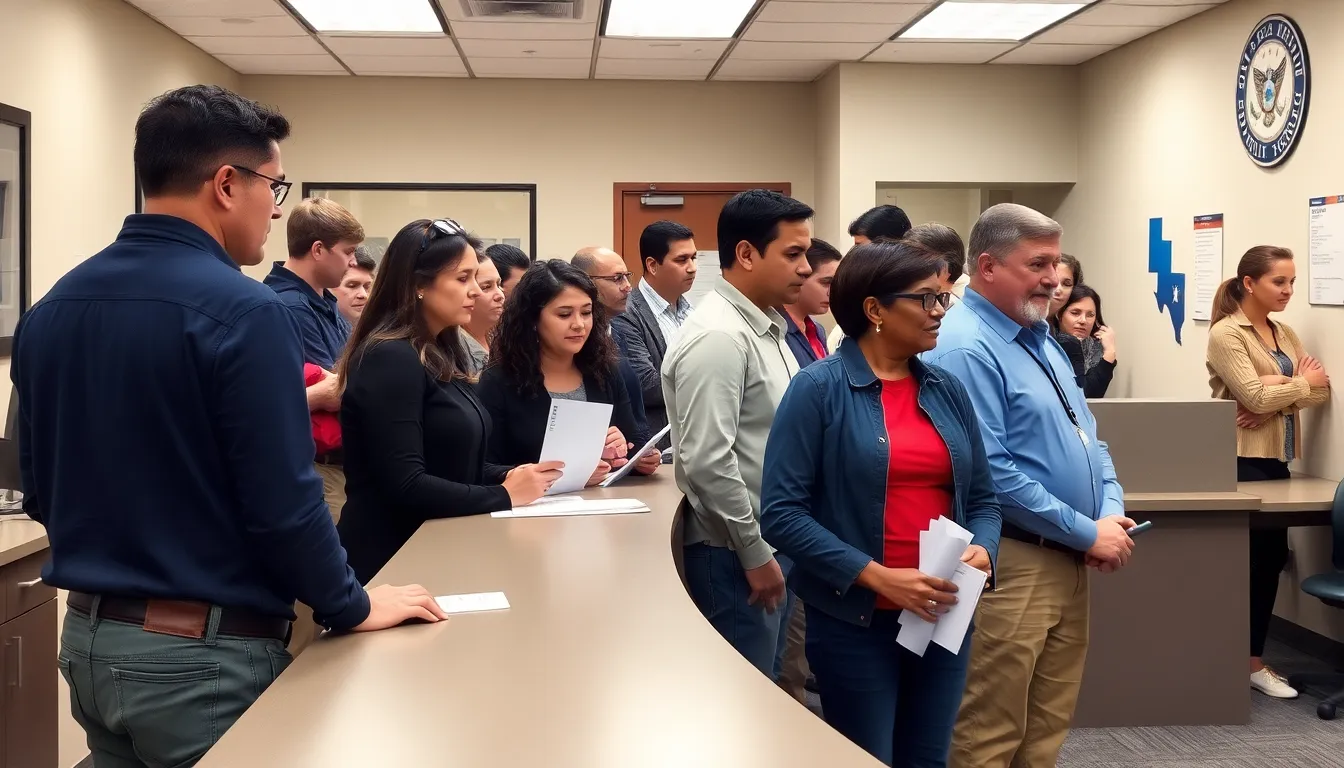In the great state of Texas, choosing between a Real ID and a regular driver’s license can feel like picking a favorite child—both have their perks, but only one’s going to get you through airport security without a hitch. As travel restrictions tighten and identification requirements evolve, understanding the differences is more crucial than ever.
Table of Contents
ToggleOverview of Texas Identification Options
Texas residents have two primary identification options: the Real ID and the standard driver’s license. Both serve critical purposes, but they cater to different needs. Generally, a driver’s license functions as proof of identity and grants the holder the right to operate a vehicle.
Real ID, on the other hand, offers enhanced security features and complies with federal identification standards. It’s essential for boarding domestic flights or entering federal facilities. A Real ID includes specific elements, such as a gold star in the upper right corner, signifying its compliance with federal regulations.
Obtaining a driver’s license typically requires passing a written test and a driving exam. In contrast, securing a Real ID involves presenting various documents that demonstrate proof of identity, residency, and lawful presence in the U.S. Individuals must provide specific forms of identification, which may include a birth certificate, Social Security card, and utility bill.
Fees for a driver’s license and Real ID differ slightly. A standard driver’s license may cost around $25, whereas the Real ID often incurs a fee of approximately $15. It’s important to note that these fees are subject to change, so checking the Texas Department of Public Safety’s website for the most current information is advisable.
Choosing between these options depends on the individual’s needs. If frequent travel by air is anticipated, opting for a Real ID might be more beneficial. For those who primarily drive and do not foresee needing federal identification, the standard driver’s license is typically sufficient. Understanding these distinctions simplifies the decision-making process for Texas residents regarding identification options.
Texas Real ID

A Texas Real ID meets federal security standards for identification. It allows individuals to board domestic flights and access federal facilities without additional documentation.
What Is a Texas Real ID?
A Texas Real ID is a state-issued identification that complies with the REAL ID Act of 2005. It provides enhanced security features, such as a star marking in the upper right corner, indicating it meets federal requirements. Obtaining a Real ID requires individuals to provide specific documents, including proof of identity, U.S. citizenship, and residency. Options include a birth certificate or passport along with a Social Security card and utility bills. The application process typically occurs at the Department of Public Safety offices across Texas.
Benefits of a Texas Real ID
A Texas Real ID offers several advantages for residents. It fulfills federal identification requirements, making air travel more convenient for frequent flyers. For individuals visiting federal buildings, possession of a Real ID grants easier access compared to a standard driver’s license. Moreover, the Real ID increases security against identity theft due to its advanced features. Individuals planning to travel or access federal sites benefit significantly from this identification option. As road use remains common, all drivers should consider how a Real ID aligns with their travel needs.
Texas Driver’s License
A Texas driver’s license serves as an essential identification document for residents. This license allows individuals to operate a vehicle legally.
What Is a Texas Driver’s License?
A Texas driver’s license functions as an official form of identification issued by the Texas Department of Public Safety (DPS). It verifies a person’s identity, U.S. citizenship, and residency in Texas. Possession of this license enables legal driving privileges across the state and serves as a widely accepted ID for various purposes.
Benefits of a Texas Driver’s License
A Texas driver’s license offers numerous advantages for individuals. Legal driving is the primary benefit, allowing residents to travel conveniently across Texas. This license is also accepted in a variety of settings, including banking and age verification for alcohol purchases. Furthermore, it simplifies identification for many activities, such as applying for jobs or obtaining government services. Overall, a Texas driver’s license provides essential proof of identity and facilitates everyday interactions in the community.
Key Differences Between Texas Real ID and Driver’s License
Texas residents should understand the key differences between a Texas Real ID and a driver’s license. These distinctions clarify their specific uses and requirements.
Identification Verification
Identification verification varies between the Real ID and a standard driver’s license. A Real ID serves as federally accepted identification, meeting stricter standards for security and identity verification. Standard driver’s licenses also verify identity but lack the enhanced features of a Real ID. To obtain a Real ID, individuals must provide documents proving U.S. citizenship, residency, and identity. In contrast, acquiring a driver’s license requires less stringent verification, focusing mainly on identity and residency.
Usage for Travel
Usage for travel highlights another critical difference between the two identification options. A Real ID is essential for boarding domestic flights and entering federal facilities, as it complies with the REAL ID Act of 2005. Frequent travelers benefit significantly from having a Real ID, as it simplifies the boarding process. Though a standard driver’s license serves as legal identification, it does not meet federal requirements for air travel. Thus, travelers without a Real ID might face additional steps at airport security.
Application Process
The application process differs in complexity between the two IDs. To apply for a Texas Real ID, individuals must visit a Department of Public Safety office, bringing specific documents such as a birth certificate and Social Security card. The process includes a brief verification and photo capture. For a standard driver’s license, the application process also takes place at a DPS office, typically requiring valid identification and proof of residency. Although both processes are straightforward, obtaining a Real ID necessitates additional documentation to meet federal standards.
Choosing between a Texas Real ID and a standard driver’s license hinges on individual needs and lifestyle. For frequent travelers the Real ID offers essential benefits that align with federal requirements making air travel and access to federal facilities seamless.
On the other hand those who primarily drive may find a standard driver’s license sufficient for everyday identification needs. Understanding the unique features and requirements of each option empowers Texas residents to make informed decisions that best suit their circumstances.




